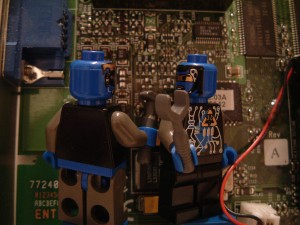Tim O’Reilly recently wrote a very important essay, The State of the Internet Operating System. I highly recommend reading it. Tim is of course the man who coined the term Web 2.0 (don’t hate him for it) and this newest essay doesn’t seem to be an evolution of that idea but a parallel track.
It was exactly one year ago tomorrow that I wrote about social media and conversations being a new database layer on top of the old Web user interface (UI). Think about it, status updates are basically command line prompts.
At the time I was only advocating for better aggregation, curation and better user experience (UX). But inline with Tim’s essay I’d like to take my example a step further and say that if the Internet is (or will become) the new operating system then social media is the new Internet.
In Tim’s post he talks about all of the multiple computing functions that happen when you preform a search or a voice activated search on your phone or a payment over the Internet. All the moving pieces happen across multiple companies and the Internet manages all of these like your computer manages all the various drivers between software.
So where does that leave social media in relation to the new Internet OS?
Most people today (not you or me but most people) go to the Internet to find things and they use their computers native applications to create things. Increasingly people will and are creating things natively in the Web. Increasingly we are turning to social media to find things that we used to find on the Internet.
We “search” for recommendations on Facebook and Twitter. This is what makes Google nervous and why they’re bumping up their social features and acquiring companies like Aardvark.
But I’m not just talking about search. If social media has finally surpassed porn as the largest activity on the Internet, that’s saying something. How many of us have got directions from people in social media or problem solved something with a friend on Twitter?
When something goes wrong on our computer or on the Internet (or in real life), we are turning to our social channels for solutions. Sometimes that’s a support forum or a favorite how-to blog but usually it’s Twitter or Facebook.
The Internet as OS will make this easier. Aardvark is a good example of that. Curated blogs on specific products are another example of that. (Side note we still need a good layer over comment data. Backtype and Echo are both a good start but not there yet.)
Social Networks Are The New Browser
If social media is the new Internet then social networks like Twitter and Facebook are the new Internet browser. To me this is the best analogy to the battle Facebook, Twitter, Google Buzz, MySpace and many other smaller players are fighting. This also highlights the mounting tension between social clients like Tweetdeck, Seesmic and Brizzly.
But we’re not there yet. Just like Internet browsers all have to accept common protocols, social networks also need to learn to play nice. New protocols like Salmon that are trying to break down the siloed walled gardens of the big social networks are an important step in this direction. Without cross platform capabilities we’ll be living in an AOL Internet world.
Similar Posts:
- Search, Discovery and Curation
- 3 Reasons Why Social Media is Killing Search
- The Mobile Social Media Developments That Really Matter
# of Comments 2
# of Comments 22
# of Comments 5
